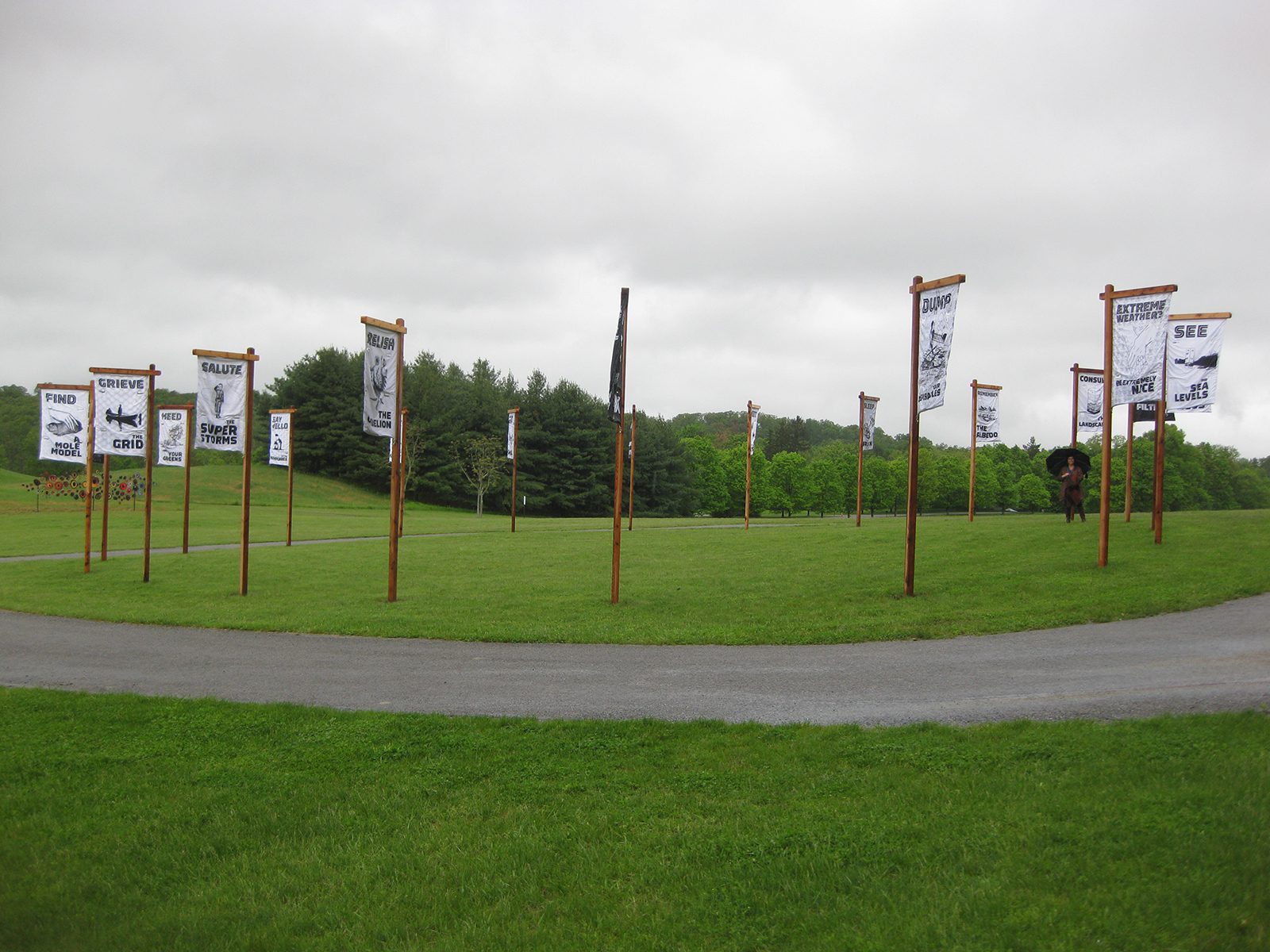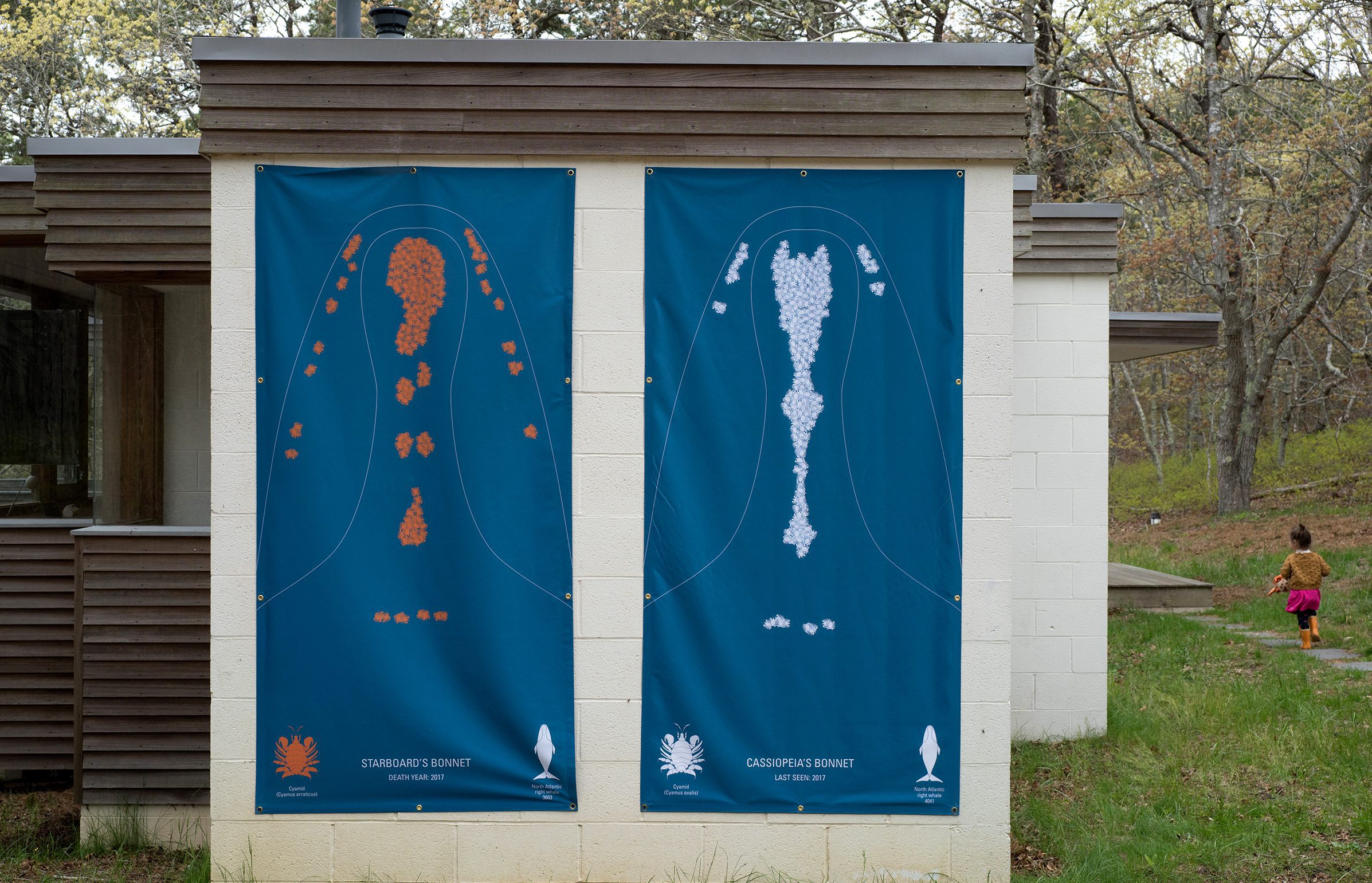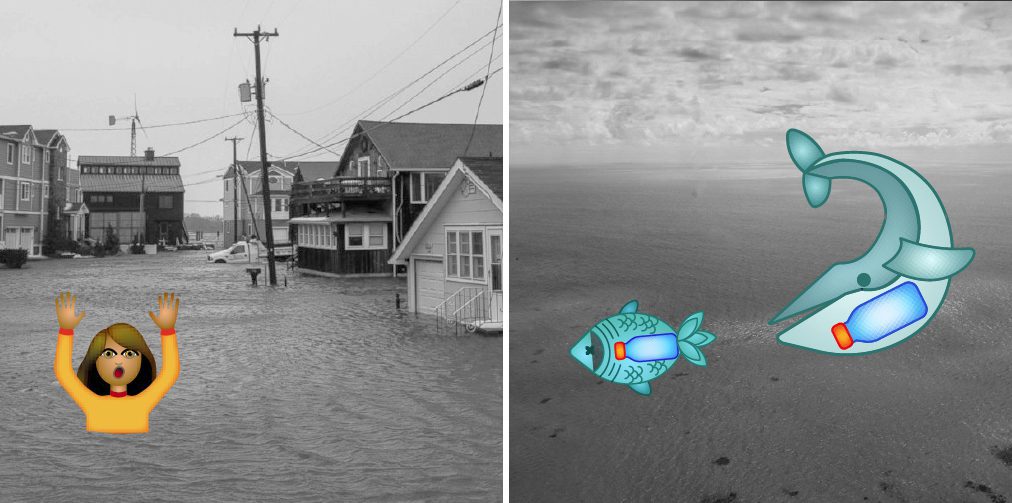MARINA ZURKOW
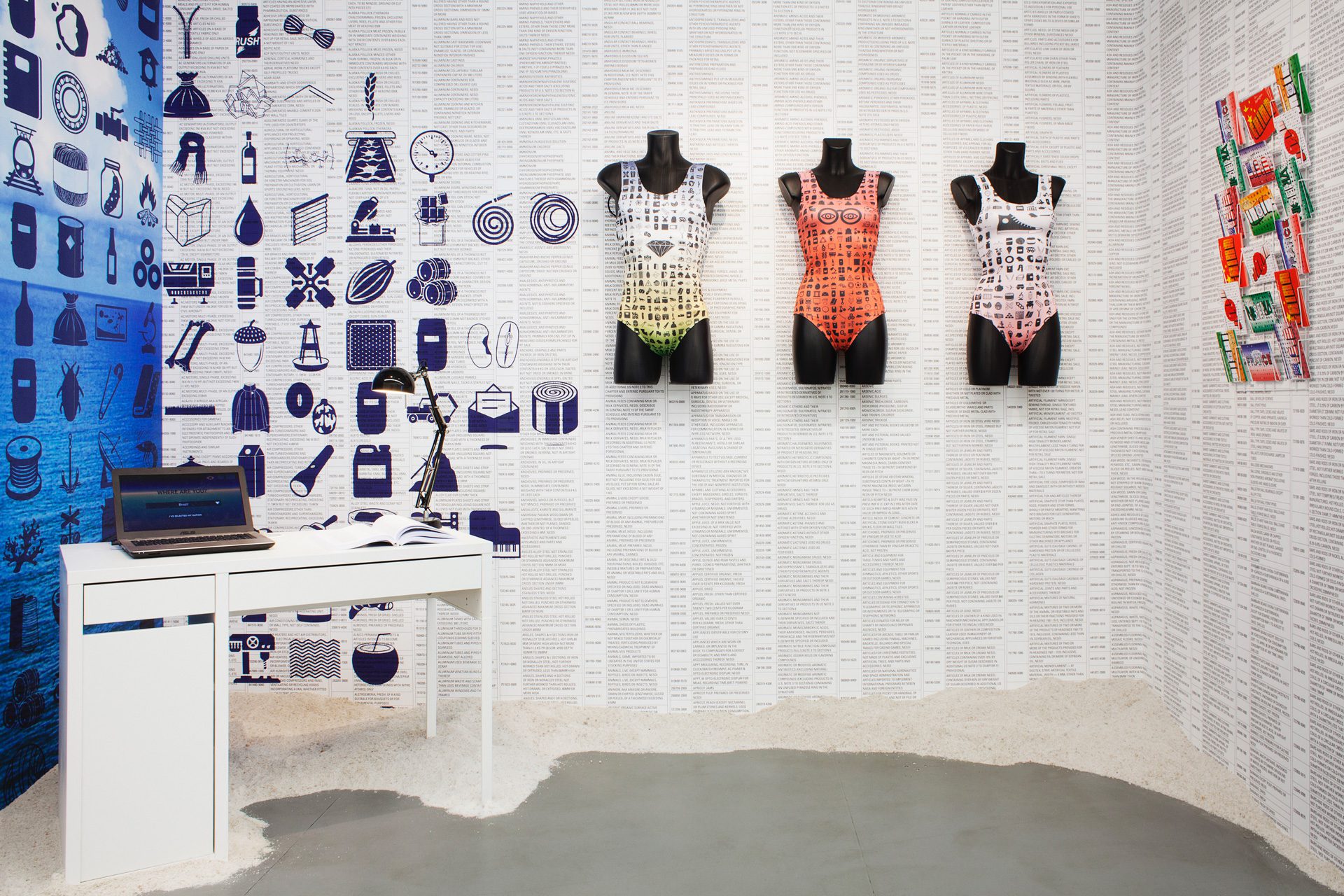
2019
Custom bathing suits, custom wallpaper, custom postcards, custom website, laptop, desk, mannequins, postcard rack, salt
In collaboration with Sarah Rothberg and Surya Mattu<br>
Web development: Neil Cline
Group exhibition “Ici Sont Les Dragons” at Maison Populaire, Montreuil, France
https://www.maisonpop.fr/ici-sont-les-dragons-2-3-venez-comme-vous-etes
This work is part of the project:
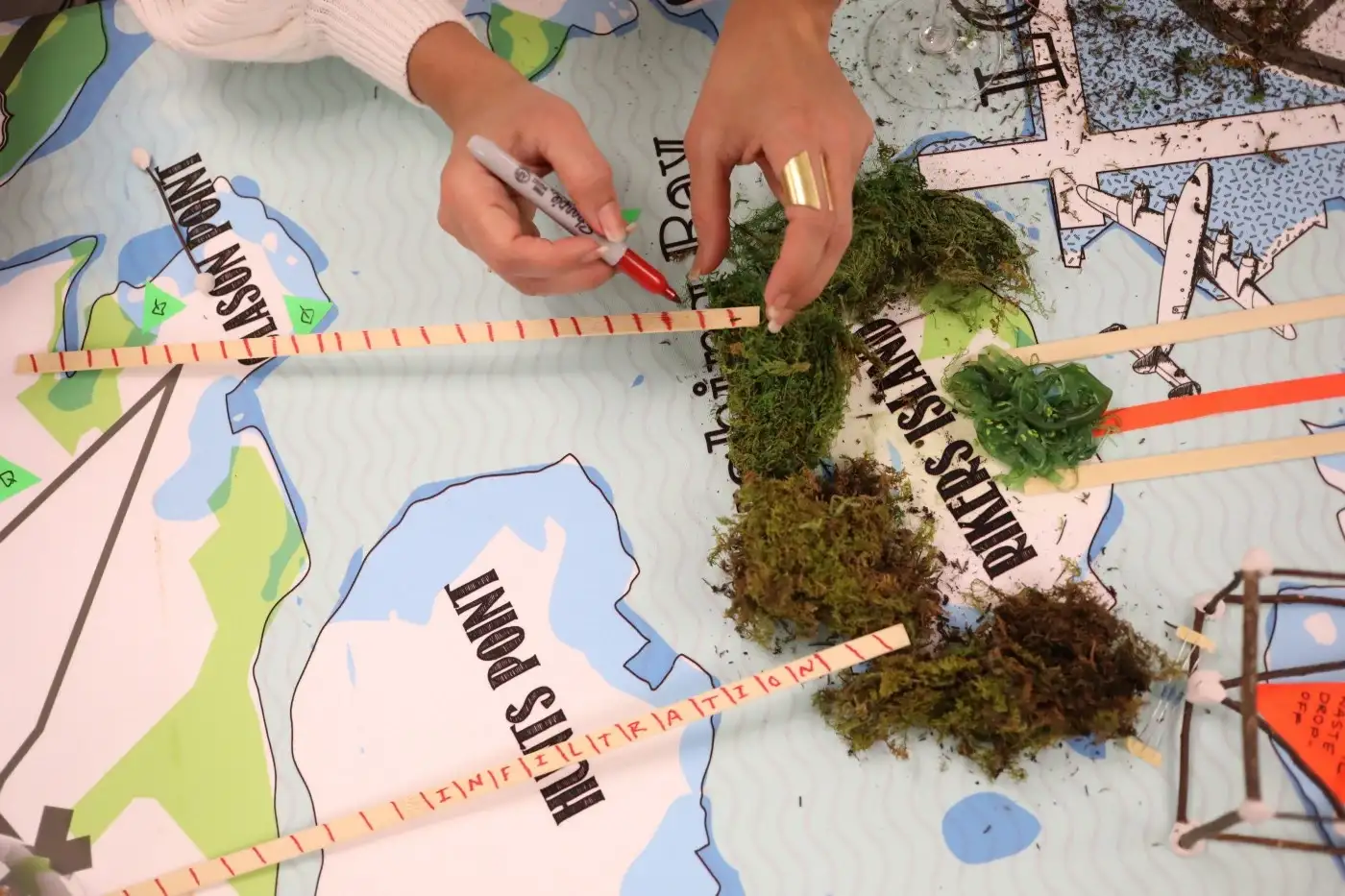
2019
Food, printed fabric maps, plexiglass, prototyping materials, print graphics/texts
Chef: Jen Monroe / Bad Taste
Artists: Marina Zurkow with Lydia Jessup and Ashley Jane Lewis
Documentation: Gilad Dor
Commissioned by the Guild of Future Architects
To kick off the Guild of Future Architects’ Future Imagination Summit, Monroe and Zurkow created an interactive, edible map and visioning workshop looking at the present and future of food equity and climate change in New York’s 5 boroughs. 50 participants ate, engaged in discussion, and played — both with their food and other art-making material…
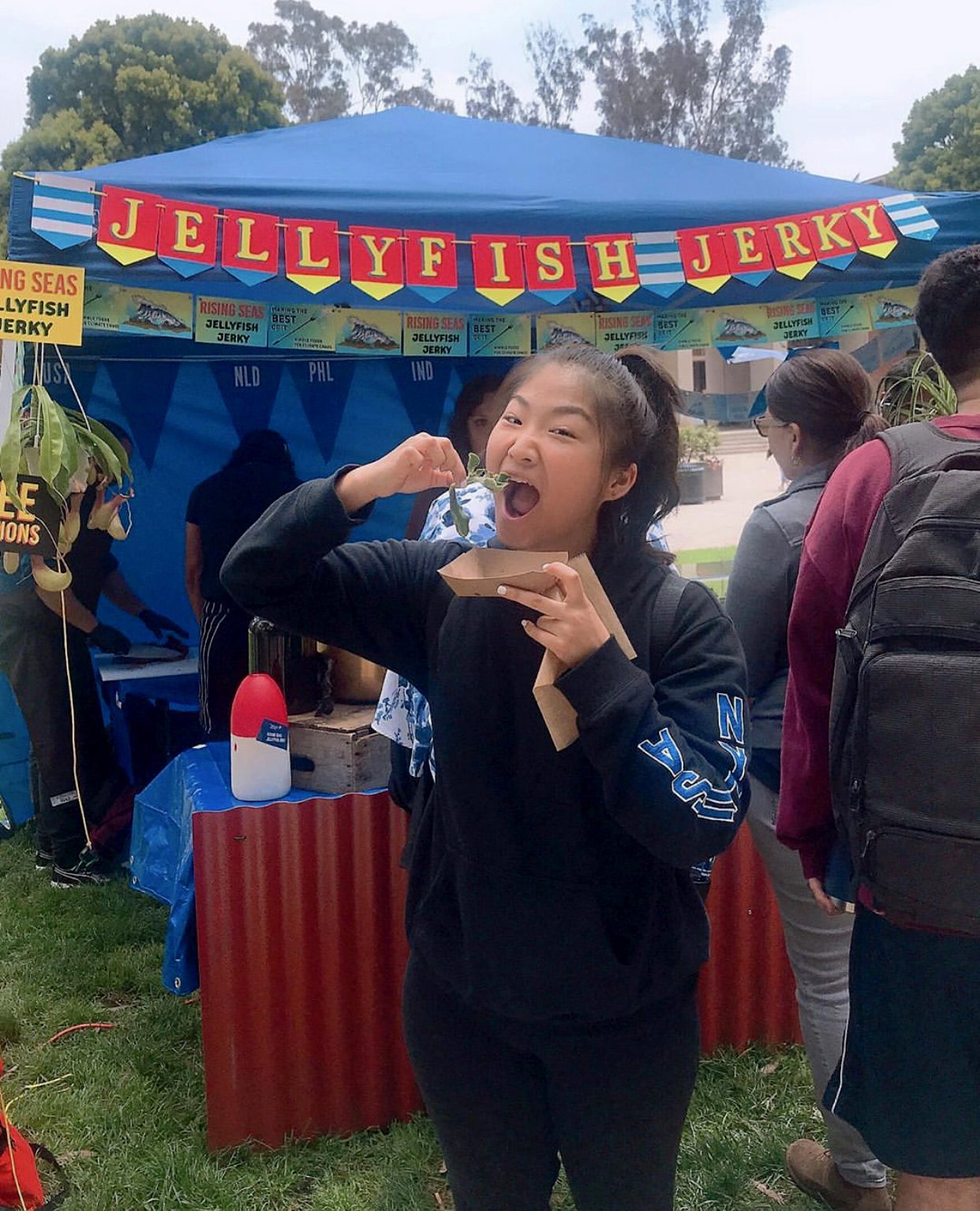
2019
Cannonball jellyfish, ice plant, kombu seaweed, condiments, laser-cut lettering, signage, tarp, stencil, plants
In collaboration with chef duo Hank and Bean
Commissioned by LENS (Laboratory for Environmental Narrative Strategy), IOES (Institute of Environment and Sustainability), UCLA
This work is part of the project:
A one-day pop up jellyfish jerky snack shack on the campus of UCLA. Serving Cannonball jellyfish jerky served with a choice of seasoning condiments reflective of 5 diverse regions susceptible to sea level rise: Haiti, the US Gulf coast, Sri Lanka/ S. India, Philippines, and the Netherlands. In addition, the snack shack served “invasive” ice…
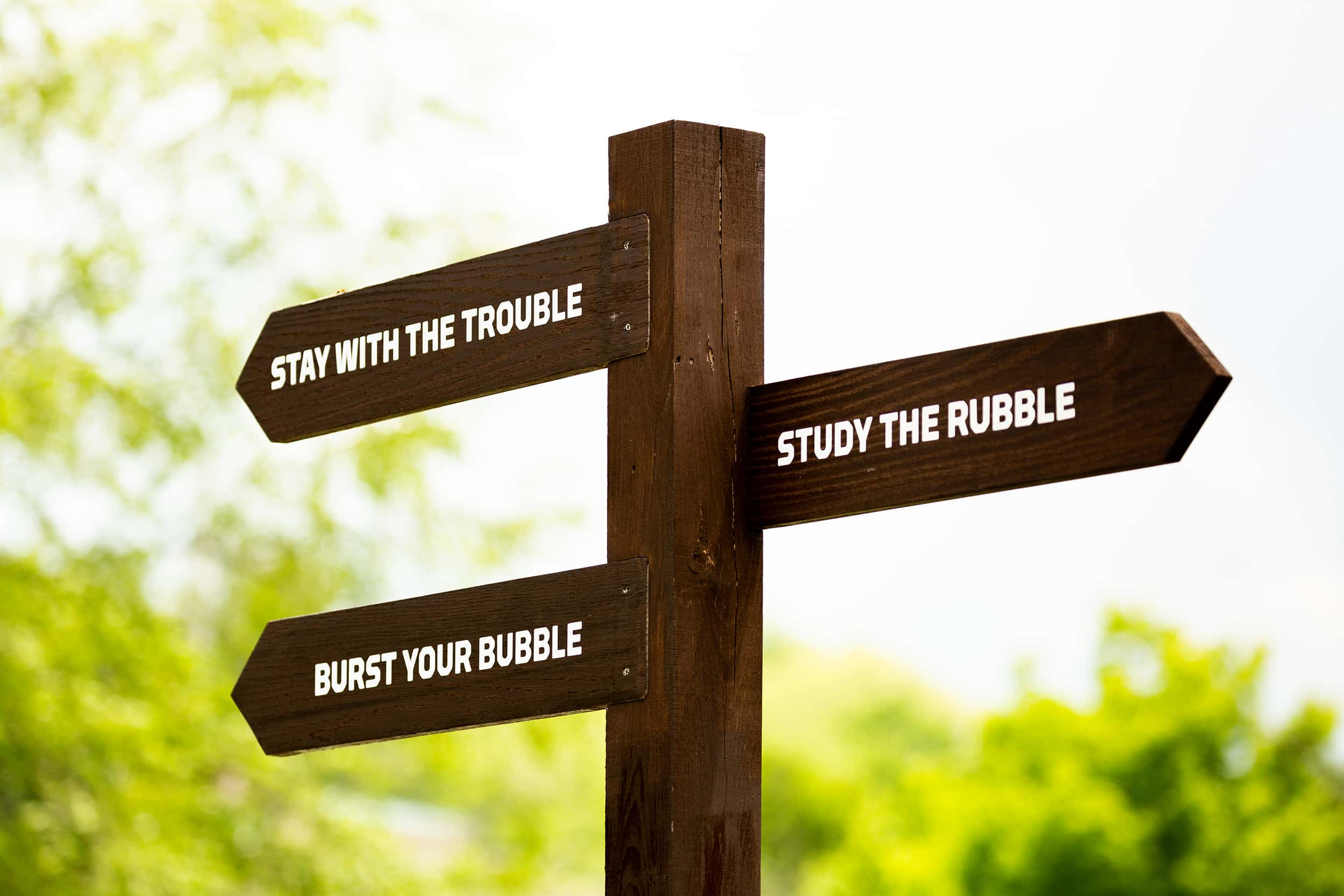
2019
Locust and red oak wood, vinyl plaques, lettering
Dear Climate Collective, in collaboration with Jennie Carlisle, Curator and Director of the Smith Gallery, Appalachian State
Fabrication: Roger Atkins of Cove Creek Woodworks
Fresh cut locust and red oak wood donated by Ian Snider of Mountain Works Sustainable Development
Documentation: Cheryl Zibisky
Commissioned by Climate Stories Collaborative at Appalachian State
This work is part of the project:
“What do I need to know for the planet to thrive?” This question animates “Signs, Wonders, Blunders,” an installation of 13 signposts, each with three multi-directional signs, located at interesting and suggestive locations on campus. The signposts use book titles and common phrases to create a set of playful proposals for new ways of understanding…
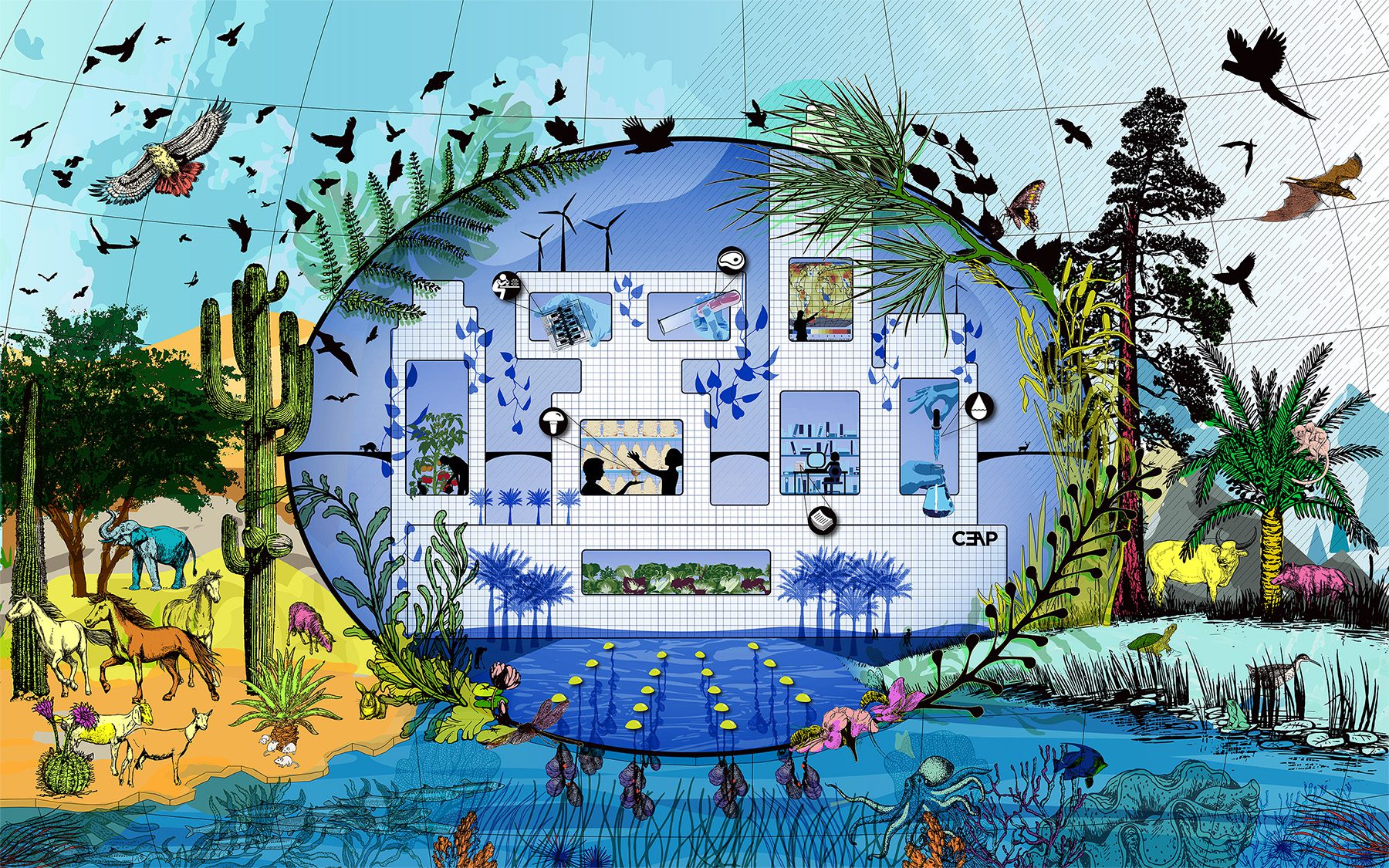
2018
Digital graphic
In collaboration with Sarah Rothberg
Commissioned by CEAP
https://wp.nyu.edu/ceap/
CEAP commissioned Zurkow and Rothberg to create a primary, scalable illustrative identity for the Center, who “conducts, supports, and disseminates research that contributes to the protection of both animals and the environment.”
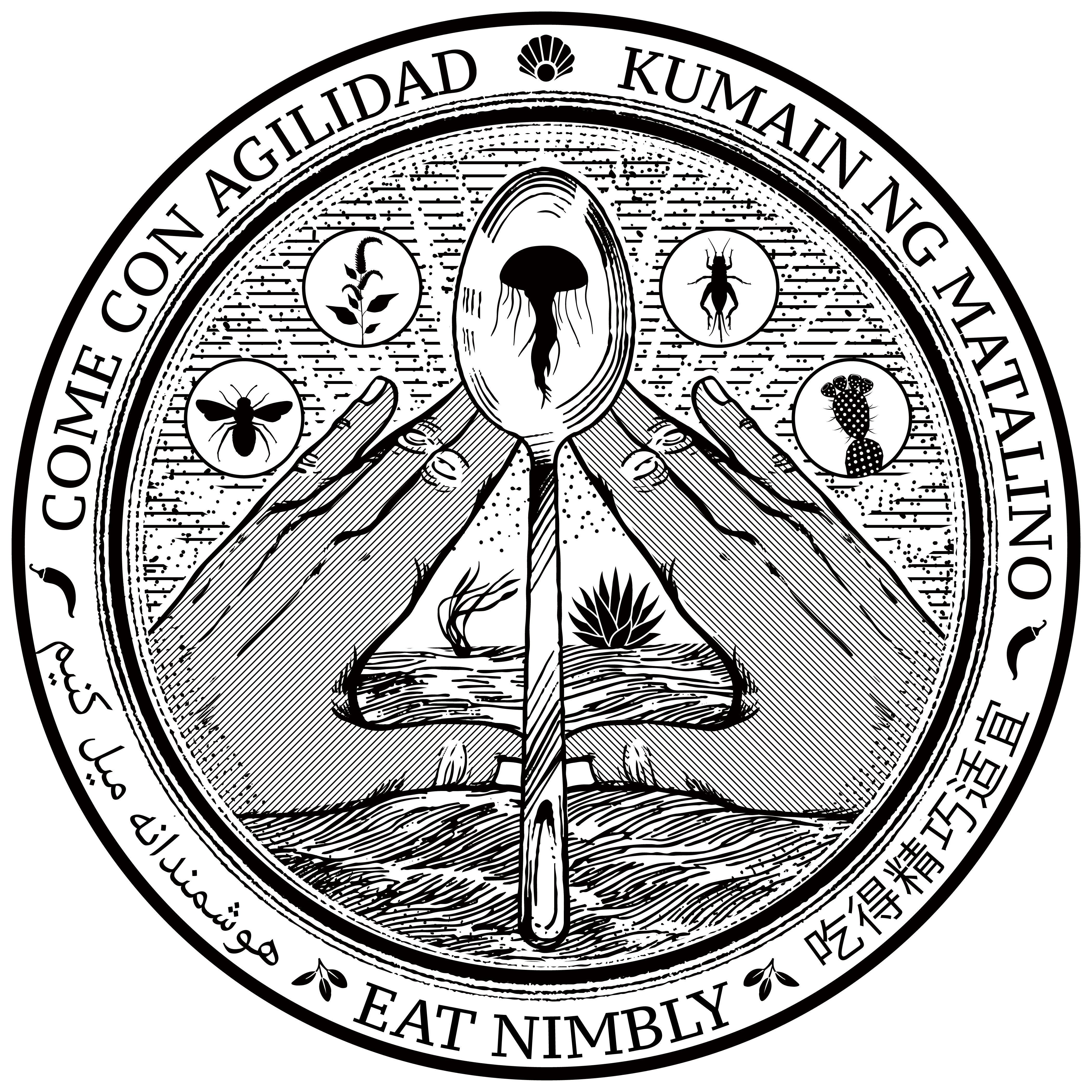
2018
Food, performance, props, slide show
In collaboration with Hank and Bean
Supported by Laboratory for Environmental Narrative Strategies (LENS) at the Institute of the Environment and Sustainability (IoES), UCLA, led by Allison Carruth
This work is part of the project:
A dinner and movable feast exploring the edible desertification of the Los Angeles region, one whose contemporary culture still holds dear the sensibility of a Mediterranean diet.
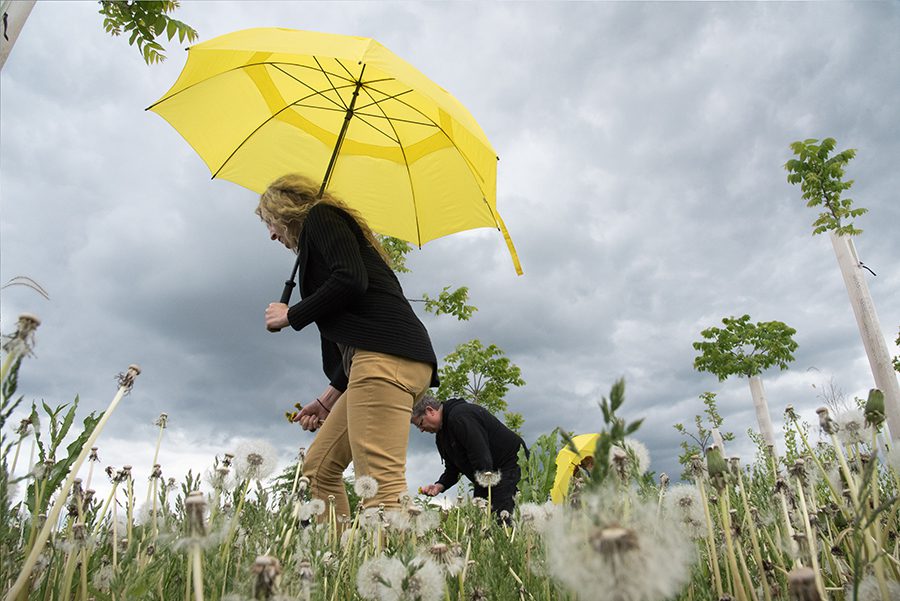
2017
Food, dandelions, placemats, writing materials, thoughtful company
In collaboration with Valentine Cadieux and Sarah Libertus
with Jim Bovino/Topos, Courtney Tchida, Tracey Deutsch
All images courtesy Dan Marshall.
Presented at The Good Acre, Minneapolis
Commissioned by Northern Lights.mn and presented as part of Northern Spark, Climate Chaos | Climate Rising, 2016-2017, with the support of the National Endowment for the Arts and the Knight Foundation
This work is part of the project:
The invitation: These Dandelion potlucks provide a community meal space to gather, share food, and explore key questions connecting food and climate change. They’re a more informal chance to add to the meal story sharing toolkit that Making the Best of It has been cultivating.
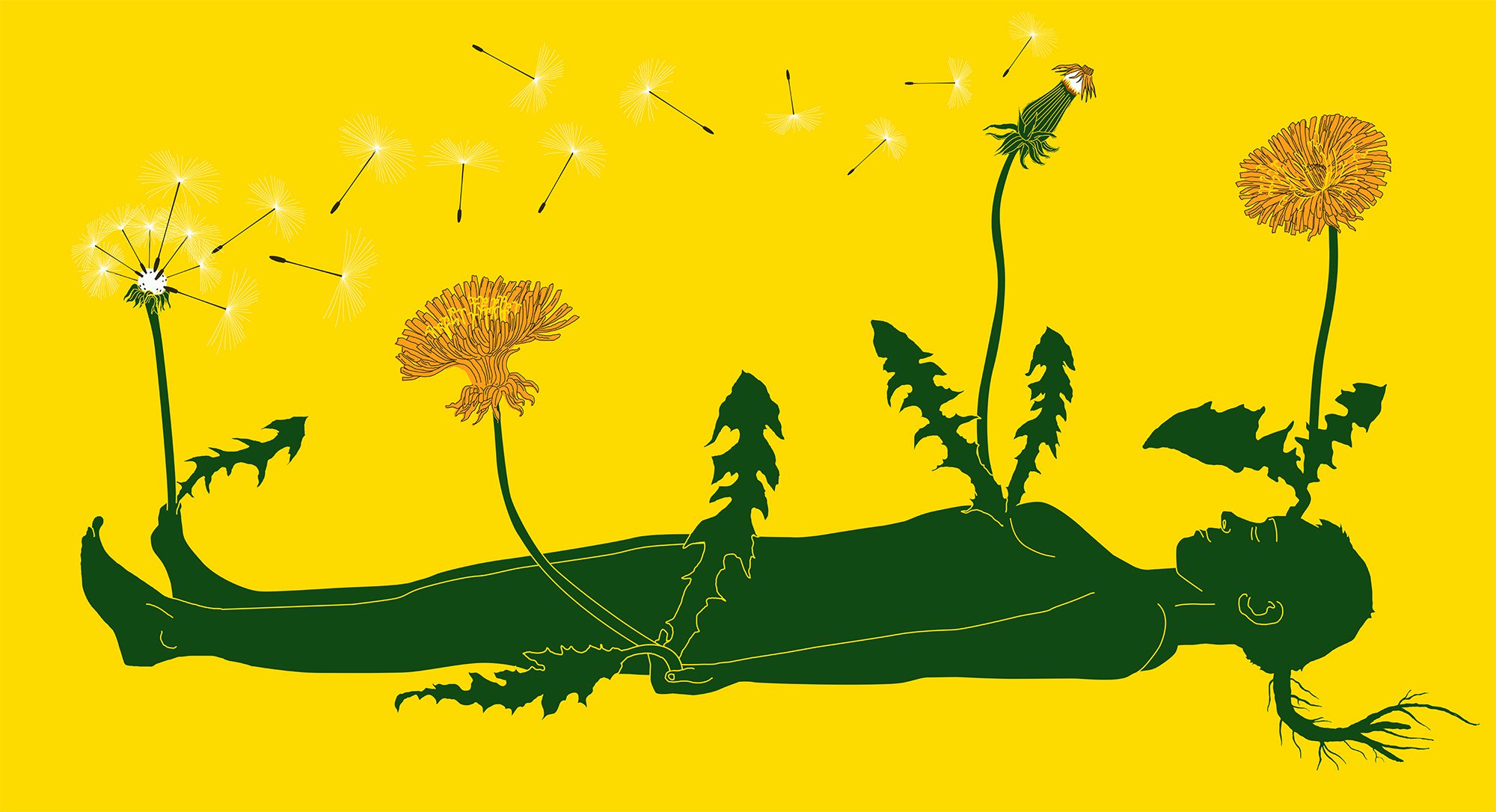
2017
Dandelions, beets, custom structure, sod, music, paper, costumes, banners
In collaboration with Valentine Cadieux, Sarah Libertus, Aaron Marx
Dandelion kvaas by Jim Bovino
Dandelions and more from Courtney Tchida
All images courtesy Dan Marshall
Commissioned by Northern Lights.mn and presented as part of Northern Spark, Climate Chaos | Climate Rising, 2016-2017, with the support of the National Endowment for the Arts and the Knight Foundation
This work is part of the project:
“Join us in a ritual festivity that invites you to become more dandelion. From trans-species oration to cow eulogies to intimate ocean tributes, this is the party of Making the Best of It, a communal service compressed into the space of a toast—to how all of us are making the best of it, now and…
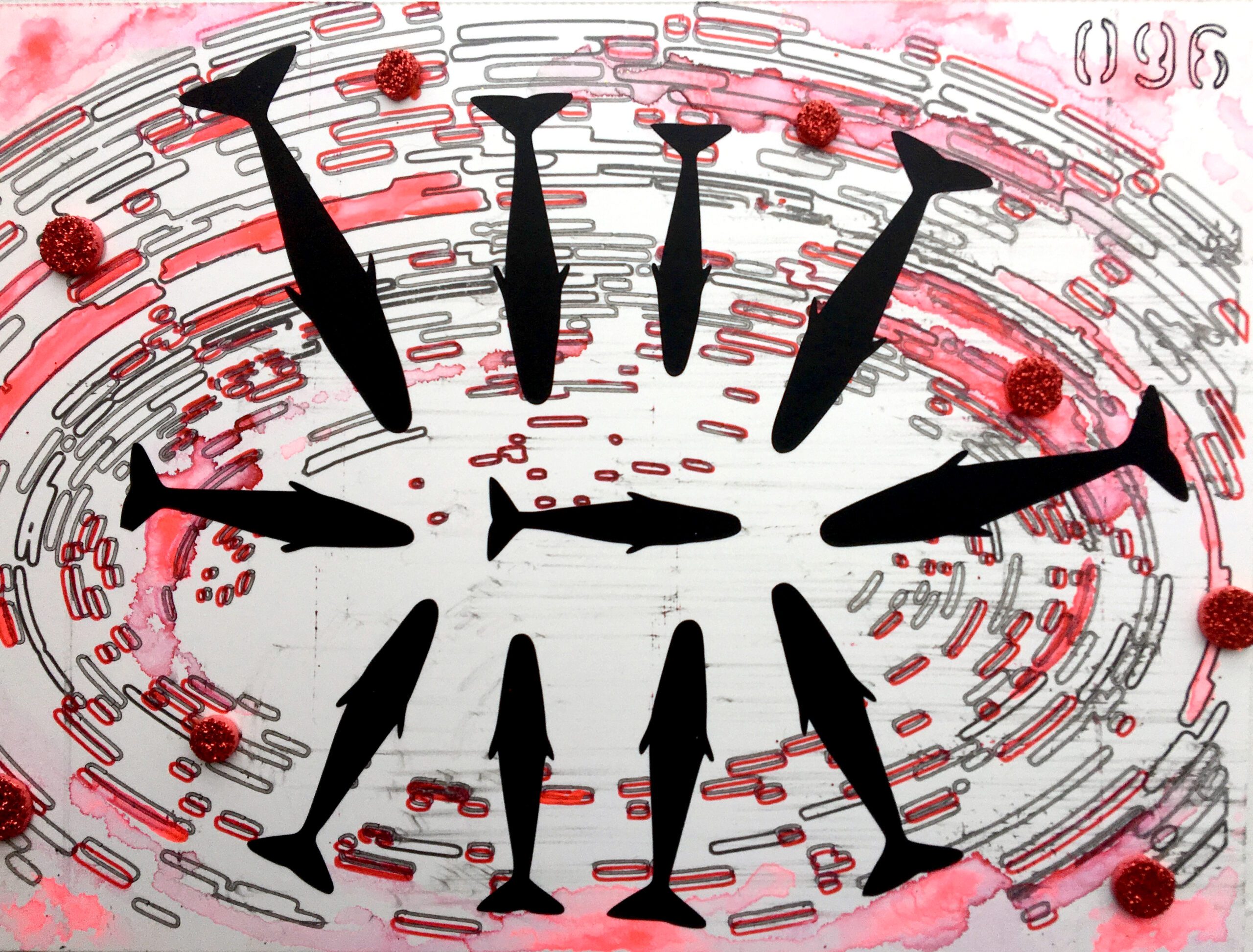
In 2017 I audited a class at ITP (the Interactive Telecommunications Program), Tisch School of the Arts, NYU called “100 Days of Making” led by Katherine Dillon. The class is structured just as the title proclaims: 100 days of unique creative outputs. It is a relentless process, one in which you work fast enough to…
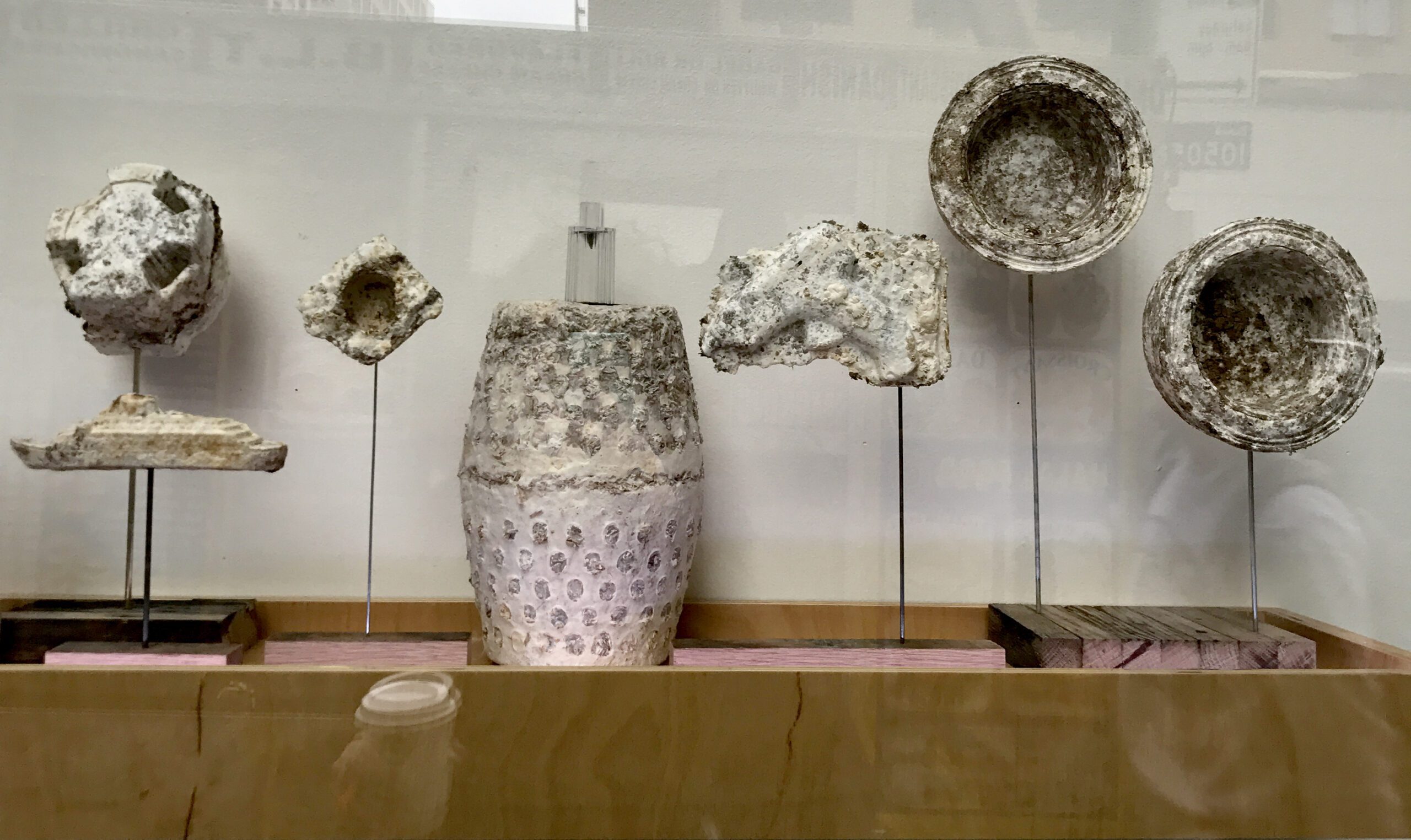
2017
Unique objects. Pleurotus ostreatus (oyster mushroom) mycelium,
coffee husks, metal rods, reclaimed wood
These anthropological artifacts appear here as fossilized remains from a mycocentrically parallel world. We are eaten by petroleum; we continue to believe that oil from rocks makes us immortal, but that promise was a fossil-fueled trick to resurrect itself. Closing the supply chain, making styrofoam substitutes, making sculptures from waste. These sculptures are cast from plastic blister packs and clamshell packaging, and…
2017
Site specific installation
Ladder, binoculars, stake flags, laminated key, toolbox
In collaboration with Floating Studio for Dark Ecologies (FSDE)
(Nicholas Hubbard, Rebecca Lieberman, Marina Zurkow) with Chester Dols (fabrication)
First created for Works on Water Triennial, 3LD, New York
Floating Studio for Dark Ecologies (FSDE) dreams of an ongoing and open library of citizen-driven field guides. The aim of these guides is to embrace the everythingness that—like it or not, pretty or not, dirty or not—constitutes the place where we are. We believe the first step to change requires an unblinkered intimacy with the…
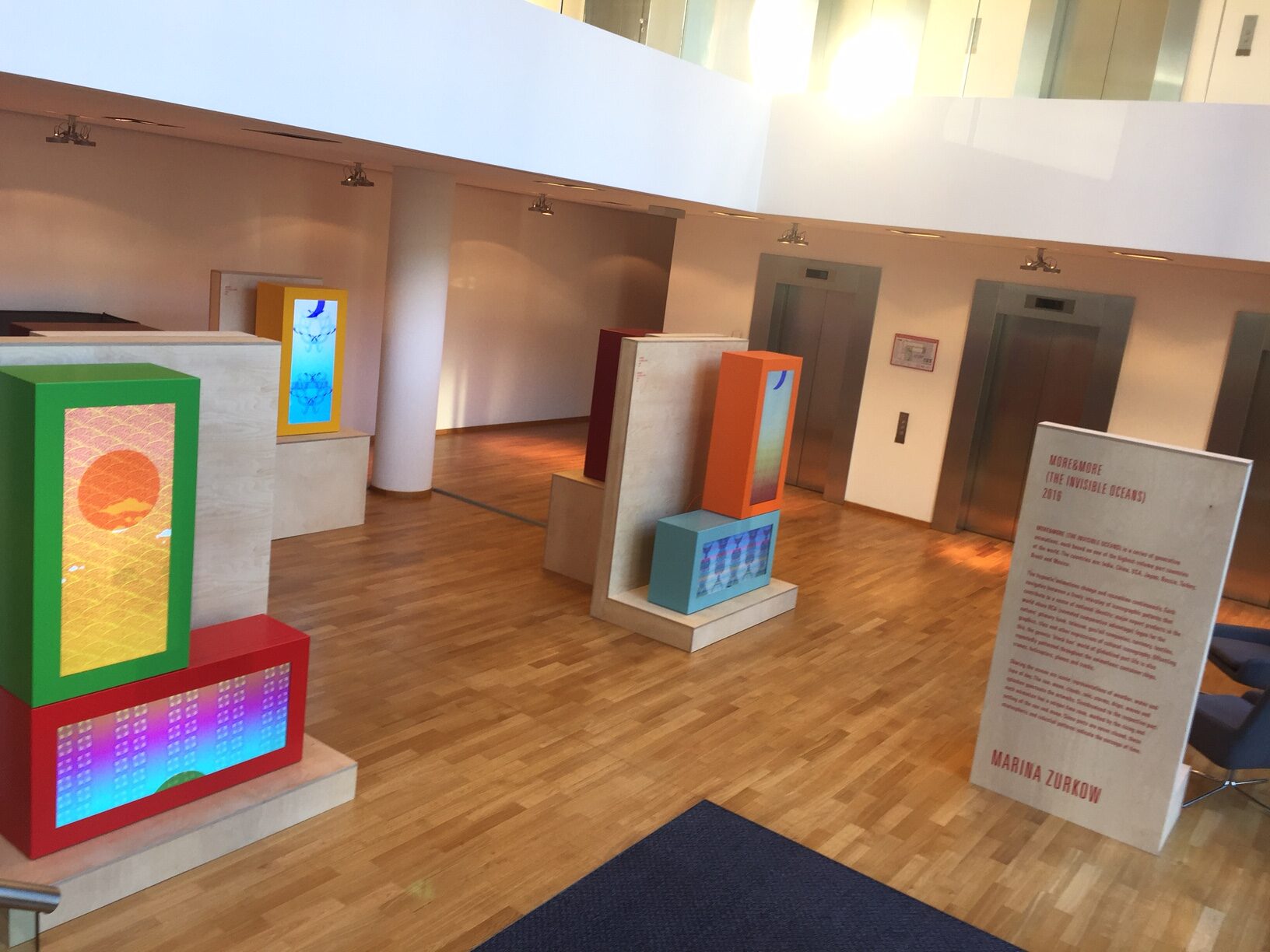
2017
Custom animated software, custom powder-coated steel boxes, hardware, plywood plinths
This work is part of the project:
Fidelity International corporate art collection purchased a complete set of the eight More&More (the invisible oceans) software sculptures.

A series of swimsuits that visualize the global circulation of stuff, shrinking the overwhelming system of complex trade relationships to a human scale.
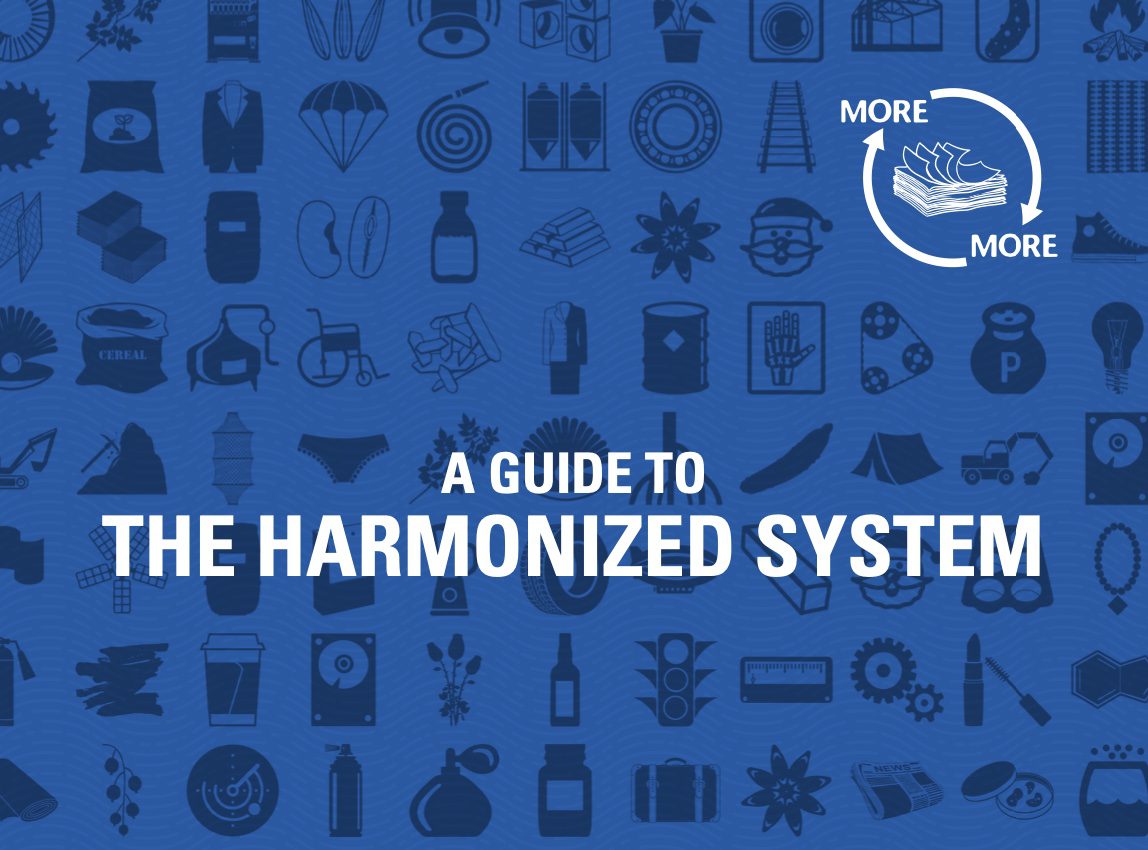
2016
Chris Piuma and Marina Zurkow, editors
Contributors Stacy Alaimo, Heather Davis, Kathleen Forde, Dylan Gauthier, Elena Glasberg, Kalliopi Mathios, Steve Mentz, Astrida Neimanis, Chris Piuma, Elspeth Probyn, Sarah Rothberg, Phil Steinberg, Rita Wong, Marina Zurkow
Published by Punctum Books
To order a print copy or download the ebook:
https://punctumbooks.com/titles/moremore-a-guide-to-the-harmonized-system/
This work is part of the project:
This experimental “brick” of a book intervenes in the Harmonized Commodity Description and Coding System (also known as the HS Code). Tucked into the alphabetically sorted 26,000 lines of code are poetic, personal, and scholarly annotations that are focused on ocean-related entries.

2016
Custom animated software in custom powder-coated steel housing
Production: Sarah Rothberg<br>
Software: Sam Brenner
Commissioned in part by Borusan Contemporary
This work is part of the project:
Unifying the disparate commodities from large port nations into a phantasmagoric depot, MORE&MORE: China, India, Japan, Mexico, Turkey, USA, Russia, and Brazil are eight sculptural animations with custom algorithmic software generating hypnotic patterns of export products. These exports are both material trade items as noted in the Harmonized System (HS) tariff code and the nations’…
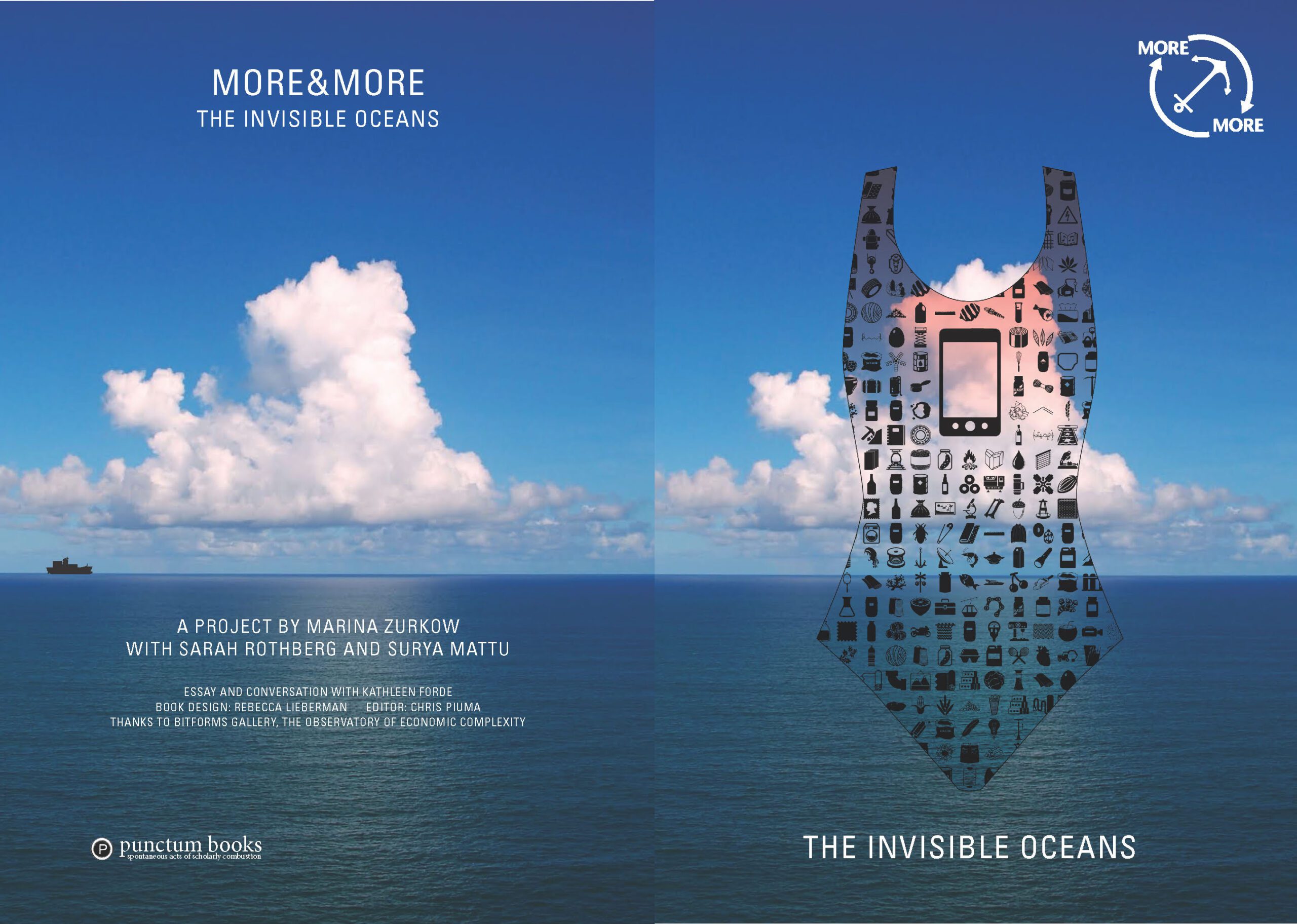
2016
More&More (The Invisible Oceans), is a catalog of the eponymous project’s first exhibition at bitforms gallery in New York, featuring full-color images of the art on display (including video stills, bespoke bathing suits, and fungal sculptures), as well as an introduction by Marina Zurkow and a conversation between Zurkow and international curator Kathleen Forde.
https://punctumbooks.com/titles/moremore-the-invisible-oceans/
This work is part of the project:
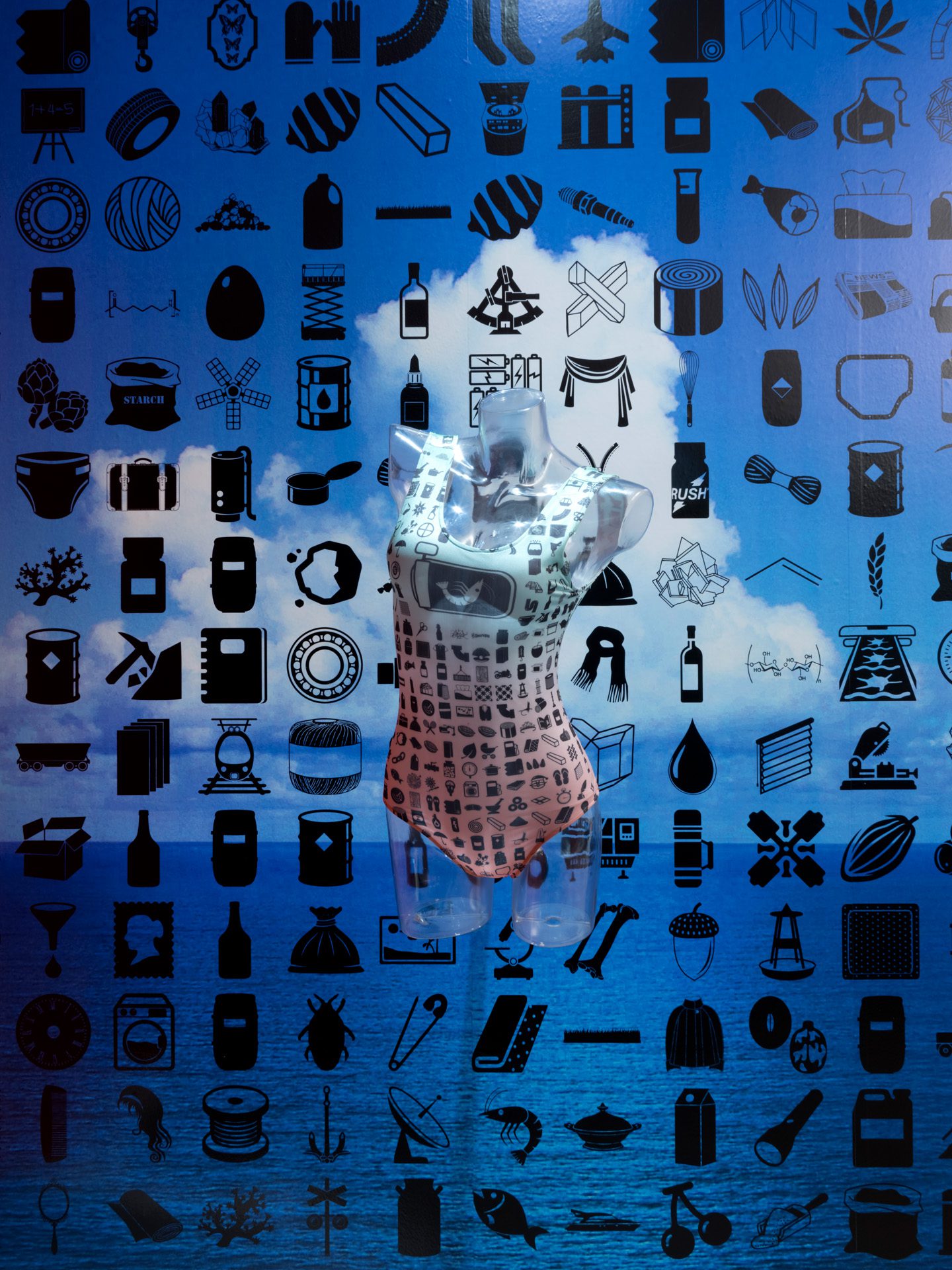
2016
Custom animated software in custom steel powder-coated housing, sculptures, shelving, crates, bathing suits, website, books
Production: Sarah Rothberg
Bathing suit/web site collaborators: Sarah Rothberg, Surya Mattu
Software: Sam Brenner
Web development: Neil Cline
Studio assistance: Ariana Martinez
Commissioned in part by Borusan Contemporary
This work is part of the project:
The ocean makes up 71 percent of our planet’s surface. So, how is it that we know more about Mars than the marine environments of Earth? As impenetrable as the deep oceans are to humans, we imperviously live in a black box of international shipping, reducing the ocean to a surface rather than an environmental…
